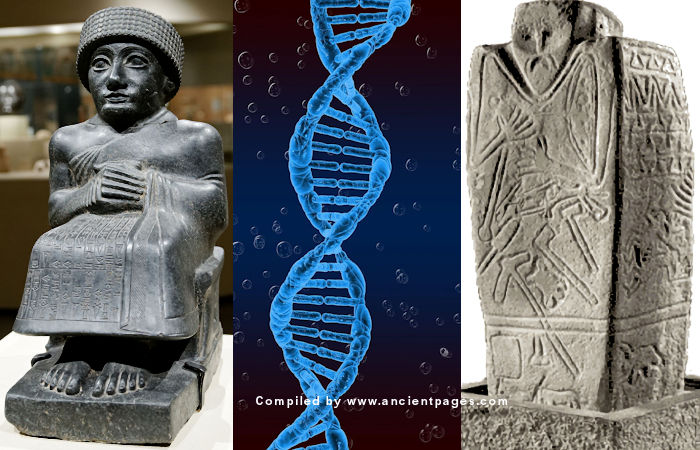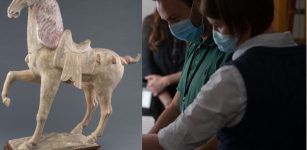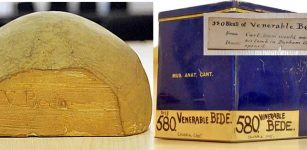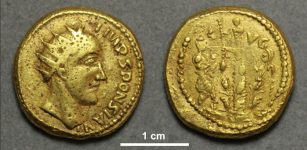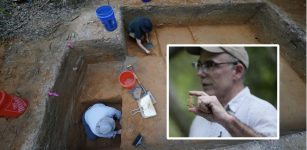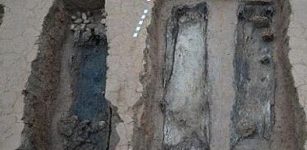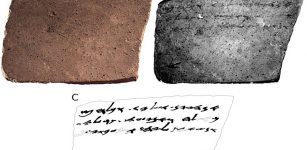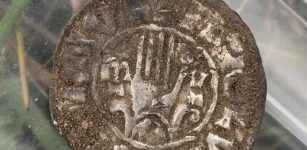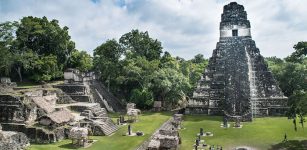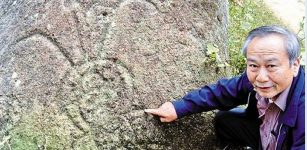Ancient DNA Provides Comprehensive Genomic History Of The “Cradle Of Civilization”
Jan Bartek - AncientPages.com - To learn more about the cradle of civilization, scientists rely on archaeology, ancient history, paleontology, and the study of DNA that help researchers to understand the genetic history and movements of people across the globe.
What is the cradle of Western civilization, this is a question many have asked. Mesopotamia is often referred to as the cradle of civilization, and most scholars agree the ancient Sumerians were the earliest developed civilization in our recorded history. There is no doubt Mesopotamia changed the world in many ways but were Sumerians really the cradle of Western civilization?
A new interesting study may shed more light on this complex subject. Across three studies, a team of scientists has presented a comprehensive genomic history of the so-called “Southern Arc,” a region spanning southeastern Europe and Western Asia and long considered the “cradle of Western civilization.”
The analysis, which examined newly sequenced ancient DNA from more than 700 individuals across the region, reveals a complex population history from the earliest farming cultures to post-Medieval times.
Until relatively recently, much of the ancient history of the Southern Arc – stories concerning its people and populations – have been told through archaeological data and the thousands of years of historical accounts and texts from the region. However, innovations in sequencing ancient DNA have provided a new source of historical information.
Here, in three separate studies, Iosif Lazaridis, David Reich, and colleagues
use ancient DNA from the remains of 777 humans to build a detailed genomic history of the Southern Arc from the Neolithic (~10,000 BCE) to the Ottoman period (~1700 CE). The findings provide an account of complex migrations and population interactions that have shaped the region for thousands of years and suggest that the earlier reliance on modern population history and ancient writings and art have provided an inaccurate picture of early Indo-European cultures.
The first study: “The genetic history of the Southern Arc: a bridge between West Asia and Europe,” presents the new dataset and focuses analysis on the Chalcolithic and Bronze Ages (roughly 5000 to 1000 BCE). This analysis revealed large genetic exchanges between the Eurasian Steppe and the Southern Arc and provides new insights into the formation of the Yamnaya steppe pastoralists and the origin of Indo-European language.
"Steppe pastoralists of the Yamnaya culture initiated a chain of migrations linking Europe in the west to China and India in the East. Some people across the Balkans (about 5000 to 4500 years ago) traced almost all their genes to this expansion. Steppe migrants soon admixed with locals, creating a tapestry of diverse ancestry from which speakers of the Greek, Paleo-Balkan, and Albanian languages arose.
The Yamnaya expansion also crossed the Caucasus, and by about 4000 years ago, Armenia had become an enclave of low but pervasive steppe ancestry in West Asia, where the patrilineal descendants of Yamnaya men, virtually extinct on the steppe, persisted. The Armenian language was born there, related to Indo-European languages of Europe such as Greek by their shared Yamnaya heritage.
Neolithic Anatolians (in modern Turkey) were descended from both local hunter-gatherers and Eastern populations of the Caucasus, Mesopotamia, and the Levant. By about 6500 years ago and thereafter, Anatolians became more genetically homogeneous, a process driven by the flow of Eastern ancestry across the peninsula. Earlier forms of Anatolian and non–Indo-European languages such as Hattic and Hurrian were likely spoken by migrants and locals participating in this great mixture.
Anatolia is remarkable for its lack of steppe ancestry down to the Bronze Age. The ancestry of the Yamnaya was, by contrast, only partly local; half of it was West Asian, from both the Caucasus and the more southern Anatolian-Levantine continuum. Migration into the steppe started by about 7000 years ago, making the later expansion of the Yamnaya into the Caucasus a return to the homeland of about half their ancestors.
All ancient Indo-European speakers can be traced back to the Yamnaya culture, whose southward expansions into the Southern Arc left a trace in the DNA of the Bronze Age people of the region. However, the link connecting the Proto-Indo-European–speaking Yamnaya with the speakers of Anatolian languages was in the highlands of West Asia, the ancestral region shared by both, " the researchers write in their study.
The second study: “Ancient DNA from Mesopotamia suggests distinct Pre-Pottery and Pottery Neolithic migrations into Anatolia,” presents the first ancient DNA from Pre-Pottery Neolithic Mesopotamia from the epicenter of the region’s Neolithic Revolution. The findings suggest that the transition between Pre-Pottery and Pottery Neolithic phases of Neolithic Anatolia was associated with two distinct pulses of migration from the Fertile Crescent heartland.
The third study: “A genetic probe into the ancient and medieval history of Southern Europe and West Asia,” focuses on ancient DNA analysis during the period of recorded history in the Southern Arc, elucidating the not-well-understood demographics and geographic origins of groups like the Myceneans, Urartians, and Romans.
“The studies by Lazaridis et al. represent an important milestone for ancient genomic research, providing a rich dataset and diverse observations that will drive the next iteration of interpretations of the human history of West Eurasia,” write Benjamin Arbuckle and Zoe Schwandt in a related Perspective.
See also: More Archaeology News
Although the authors note that Lazaridis et al. have produced an “astounding dataset, unimaginable in its scale just a decade ago,” Arbuckle and Schwandt highlight the challenges and limitations of the interpretations, suggesting that many of the narratives explored across the three studies reflect a Eurocentric worldview.
The study was published in the journal Science
Written by Jan Bartek - AncientPages.com Staff Writer

